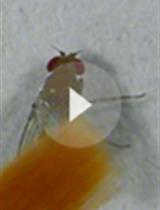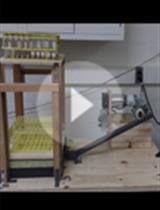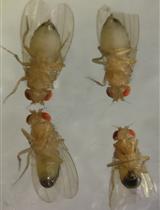- EN - English
- CN - 中文
Proboscis Extension Reflex in Apis mellifera [Honeybee] with Only One Antenna
通过一个触须研究意大利蜜蜂的伸喙条件反射
(*contributed equally to this work) 发布: 2017年12月05日第7卷第23期 DOI: 10.21769/BioProtoc.2624 浏览次数: 7030
评审: Xi FengAnonymous reviewer(s)
Abstract
The proboscis extension reflex (PER) is a common classical conditioned reflex which is widely used in the neurology and ethology. In honeybees, PER experiments can train bees to associate an odor with a reward or punishment. Here we present a variation of the PER experiment in Apis mellifera that trains honeybees using only one antenna. This variation on the PER paradigm could assist research efforts in fields which study lateralization within the nervous system.
Keywords: PER (PER)Background
Vertebrate brains can solve complex tasks with regional specialization (Kandel et al., 2000) and this may also be the case in invertebrates (Frasnelli et al., 2010). To date, experimental evidence for lateralization, a form of regional specialization, in honeybees has been documented for simple olfactory classical conditioning. For example, asymmetry in use of the antennae (Letzkus et al., 2006; Rogers and Vallortigara, 2008) with associated asymmetry of anatomy (i.e., sensilla number and electroantennographic responses of antennal neurons (Anfora et al., 2010; Frasnelli et al., 2010)). The honeybee Apis mellifera displays a clear laterality in responding to learned odors (Guo et al., 2016). By training honeybees on two different versions of the well-known proboscis extension reflex (PER) paradigm (Kuwabara et al., 1957; Bitterman et al., 1983), we demonstrated that bees respond to odors better when they are trained through their right antenna. To our knowledge, that was the first report of asymmetrical learning performance in an insect. In summary, our modified protocol can be used to further explore lateralization in invertebrates.
Materials and Reagents
- Thin strips of tape
- Silicone rubber compound (Chemoment Materials; Address: building F9, room 402, 110 Kexue Road, Hefei, China. Telephone: 0551-62329017)
- Sponge
- Toothpick
- Plastic pipe
- 2.5 ml syringes
- 1.5 ml RNase-free tubes (Corning, Axygen®, catalog number: MCT-150-C )
- Bees (Apis mellifera ligustica)
- Ice
- Lemon essence (Queen Fine Foods, https://queen.com.au/product/natural-lemon-extract-50ml/)
- Vanilla essence (Queen Fine Foods, https://queen.com.au/product/natural-vanilla-extract-200ml/)
- Liquid nitrogen
- Sodium chloride (NaCl)
- Sucrose
- 1 M sucrose solution (see Recipes)
- Saturated saline solution (see Recipes)
Equipment
- Metal tube (made with copper by a local machinery plant in Nanchang, Jiangxi, China, diameter: 1 cm, length: 2 cm)
- Incubator (Shaoguan Thaihung Medical Instrument Company, model: LRH-250A )
- Small suction fan
- Scissors
Procedure
文章信息
版权信息
© 2017 The Authors; exclusive licensee Bio-protocol LLC.
如何引用
Guo, Y., Wang, Z., Zeng, Z., Zhang, S. and Chen, R. (2017). Proboscis Extension Reflex in Apis mellifera [Honeybee] with Only One Antenna. Bio-protocol 7(23): e2624. DOI: 10.21769/BioProtoc.2624.
分类
神经科学 > 感觉和运动系统 > 动物模型
神经科学 > 行为神经科学 > 实验动物模型 > 其它
您对这篇实验方法有问题吗?
在此处发布您的问题,我们将邀请本文作者来回答。同时,我们会将您的问题发布到Bio-protocol Exchange,以便寻求社区成员的帮助。
提问指南
+ 问题描述
写下详细的问题描述,包括所有有助于他人回答您问题的信息(例如实验过程、条件和相关图像等)。
Share
Bluesky
X
Copy link













